[ad_1]
Robert Capa, one of the world’s most celebrated war photographers, used to say: “If your photographs aren’t good enough, you’re not close enough.” In this very simple sentence lies the dangerous challenge of photojournalists engaged in a conflict, where “being close enough” means looking at war point-blank in all of its brutality. It means aiming the lens at bodies torn apart by bombs, at buildings destroyed by missiles. It means staying with your feet firmly on the frontline, even putting your own life at risk.
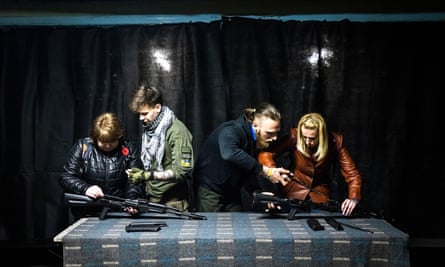
From the start of the war in Ukraine, Guardian photographers have documented the horrors of the Russian invasion in nearly all regions of the country. They have covered the exodus of Ukrainian refugees to Poland, the flight of civilians from the cities, life in the trenches of Sumy and Zaporizhzhia, the horror of the mass graves of Bucha and Borodianka, the destruction of Kharkiv and Mykolaiv, and the liberation of Izium and Kherson. One year after the Russian invasion, Alessio Mamo, Anastasia Taylor-Lind, Ed Ram and Anastasia Vlasova describe their experiences covering the conflict.
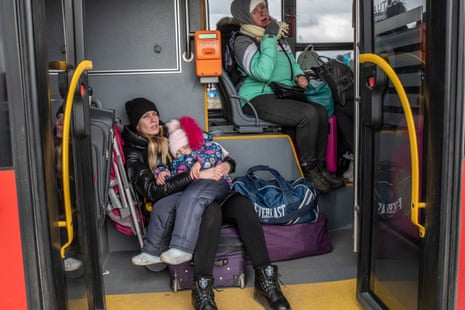
Alessio Mamo
In the last 10 years, the Sicily-based photojournalist and two-time World Photo winner Alessio Mamo, 46, has covered natural disasters and wars in at least eight countries, including Syria, Iraq and Sudan. This war, he says, is a completely different story. “War is horrible in any place, country or continent,” he says. “But the consequences of using powerful Russian weapons in Ukraine are something I have rarely seen in other places. The destruction of Izium and Borodianka reminded me somewhat of the destruction of Mosul, which was also liberated after violent fighting. The gutted buildings in Kharkiv reminded me of the rocket-blasted buildings in Baghdad.”
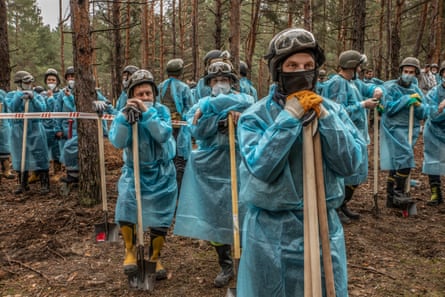
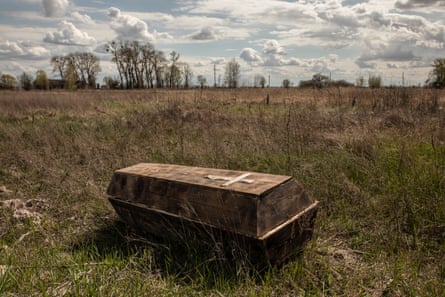
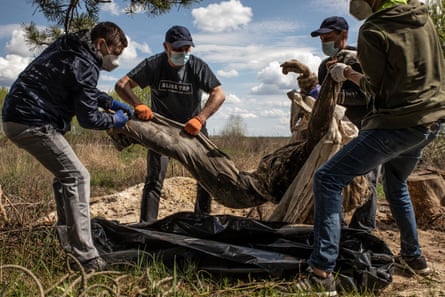
-
Left, a coffin exhumed from a cemetery near Borodianka; and right, a body exhumed close by, in April 2022.
Mamo began to cover the war in Ukraine at the end of February last year, a few days after the invasion, documenting from the Polish city of Przemyśl the flight of hundreds of thousands of Ukrainian refugees from the country. In early March, he entered Ukraine, and over a year he has covered the most significant events of the war, from the mass graves in the north of Kyiv to the liberation of Izium and Kherson, visiting more than 10 regions and nearly 25 war-torn cities. Among all the horrible things he has witnessed, there is one image in particular he cannot get out of his head. “The pale face of a very young little girl killed in Borodianka by Russian artillery while she was trying to escape with her family,” he says. “Her body had been found in a mass grave a few metres from a hospital. They had covered her with a white sheet, which clung to her body, transforming it into something like a white marble statue. I thought about how this damned war took her life so soon and destroyed all her hopes and dreams.”
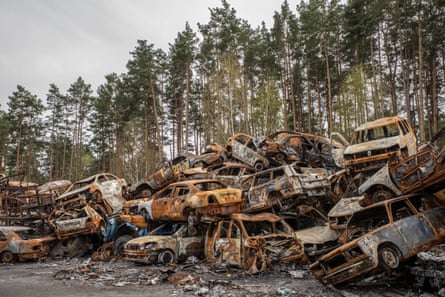
Mamo: “The owners of these cars did not manage to leave the city. The wrecks of dozens of cars in Irpin, Bucha and Borodianka, reviewed by experts, show the characteristic holes caused by submunitions from cluster bombs used by the Russian military.”
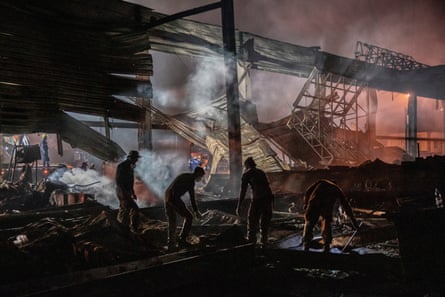
Mamo: “When the two Russian X-22 cruise missiles hit the crowded shopping centre, at 3.53pm local time, it ignited a huge fire that took 300 emergency workers more than four hours to extinguish. Authorities estimate there were between 200 and 1,000 people inside at the time of the attack. Many managed to flee to a nearby bomb shelter when they heard the air raid sirens. Others did not make it in time and remained trapped inside. At least 18 people were killed and 21 are still missing.”
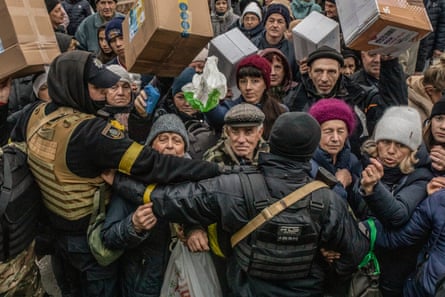
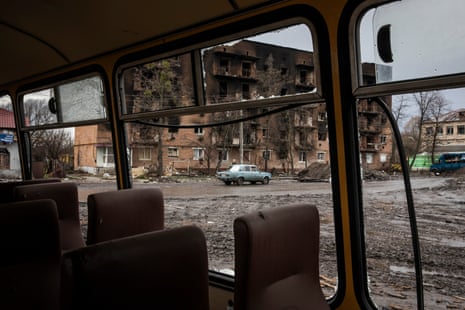
Anastasia Taylor-Lind
For the last nine years, the London-based, internationally renowned photojournalist, author and poet Anastasia Taylor-Lind, 41, has worked in Ukraine covering issues relating to women, war and violence, including the conflict in the Donbas that began in 2014. Since the Russian invasion, she has covered the excavation of mass graves in Bucha, the devastation of the Sumy region, and the frontline in the key city of Bakhmut. During her career, she has worked in conflict zones such as Iraq, Libya, Gaza and Nagorno-Karabakh. But this conflict, she says, is different “in every way”. “It’s in Ukraine, in Europe, and the invasion of Ukraine is by Russia,” says Taylor-Lind, whose first book, Maidan – Portraits from the Black Square, documented the 2014 Euromaidan revolution in the country.
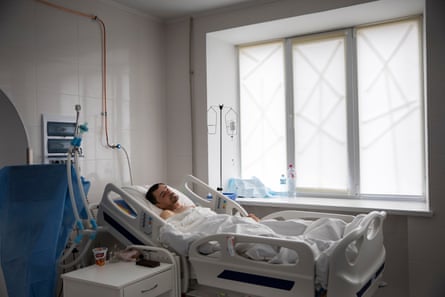
-
Andrei Kovalov, 45, who was injured in the Kramatorsk train station attack on 8 April 2022, at a hospital four days later.
Among the most significant experiences of this war, Taylor-Lind says, was following the same families from Donbas over five years before documenting their displacement by the full-scale invasion.
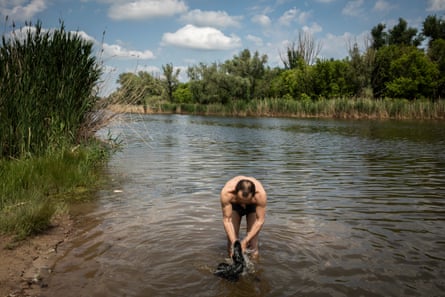
-
Slava Volodymyrovich, a soldier in the Donbas battalion, washes some of his clothes in the river in Sloviansk, June 2022.
“It was devastating to see my friends, people who had stayed in their homes when others had long since left, building lives along the frontline, despite the challenges that the war brought them, for eight years, suddenly lose everything,” she says. “One family, the Griniks, fled to relatives in Poltava region. Nikolay, the father, volunteered to join the Ukrainian army, leaving the family fractured along gender lines, as is so common in Ukraine today.”
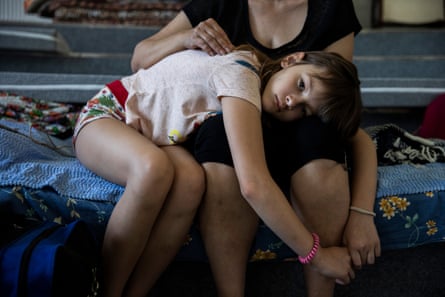
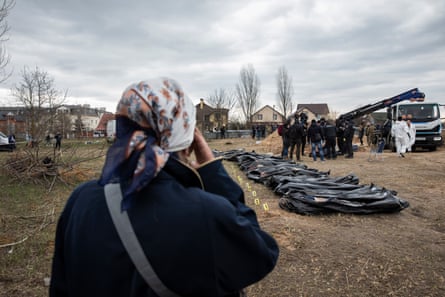
-
Natalia Lukyanenko, 63, watches authorities excavate a mass grave in Bucha, April 2022.
Natalia’s son was killed during the Russian occupation of the town. Her son-in-law, Volodymyr Stefaniuk (34), just identified his brother, the 4th body to be removed from the pit, laying here in a body-bag labelled with the number 4, 8 April 2022.
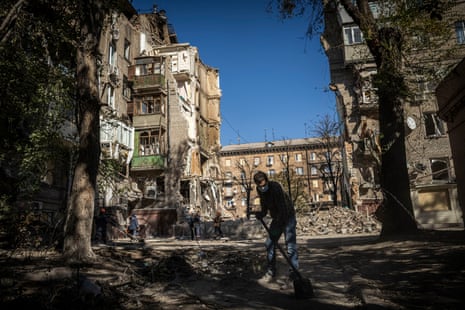
Ed Ram
On 17 October last year, Ed Ram, 36, had just arrived at Kyiv’s central railway station on an overnight train when a series of Russia’s Iranian-made Shahed drones targeted the city. “The drones started to land as I got on to the platform,” says Ram. “As the drones approached, you’d first hear the air defence, then the police desperately firing their rifles in the air, then the rattle of the drone’s engine coming closer. I remember lying face down in the street near the station as the third flew overhead then landed with a boom a few hundred metres away. It was hard to know which direction the drones were coming from.”
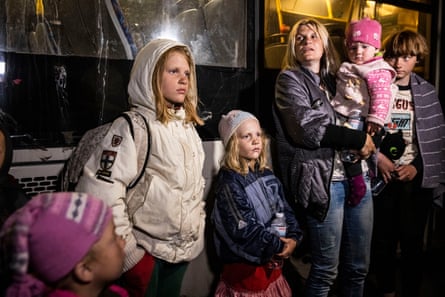
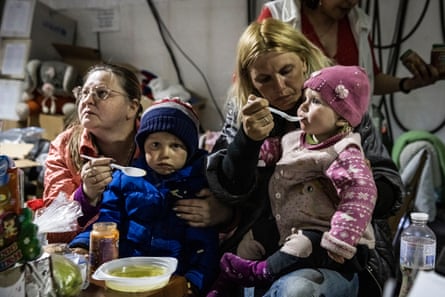
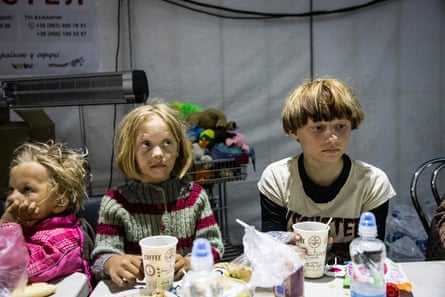
Ram, who is based in Nairobi and has covered conflicts in Libya, northern Mozambique, eastern DRC and Somalia, has documented for the Guardian some of the most crucial battles of the Ukraine conflict, going as far as the frontlines of Donbas. “I think every war has clear similarities and obvious differences, and it’s always devastating to see humans bringing pain and suffering on each other,” he says. “The nature of Russia’s unprovoked invasion and the absurdity of Putin’s ambitions make it particularly difficult to see the devastation and loss of life and livelihoods first-hand.”
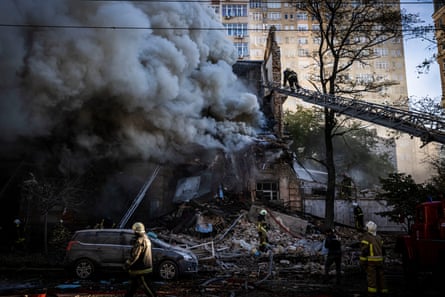
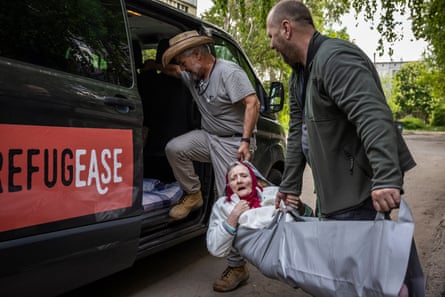
Ram’s work isn’t just about trenches and frontlines. His most significant reports have focused on vulnerable people, who in war pay the highest price, because, he says, “they summed up the absurdity of the Russian aggression and the complexity of Ukraine as a nation emerging from the shadow of the Soviet Union”. A year into the war, Ram says it is important to cover this conflict “as much as possible due to the suffering that is being caused. It can be challenging to find creative ways to do that. I think it’s important to keep audiences as engaged as possible, and photography projects can be a powerful way to do this.”
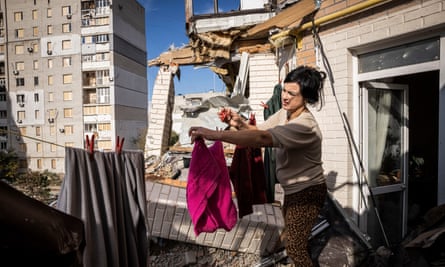
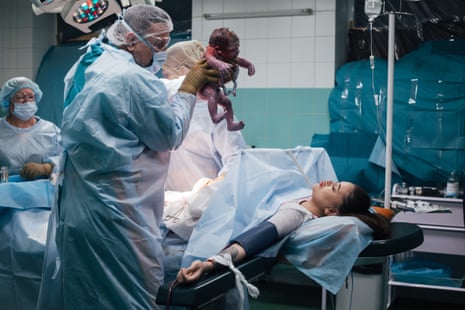
Anastasia Vlasova
The Kyiv-based Ukrainian photojournalist Anastasia Vaslova, 31, did not choose to cover this war. Born in Kherson and raised in Kramatorsk, her work was “a natural response to the events happening to me and the people around me,” she says. “I always considered visual storytelling a powerful tool and my way of communicating with the world. What drives me in my work is the ability to translate the words, feelings, and experiences of people into images. I think that I have already reached the point where I can’t imagine myself not talking about the war or not photographing it. It’s like a mission or a moral duty, and my way of coping with what is going on at the same time.”
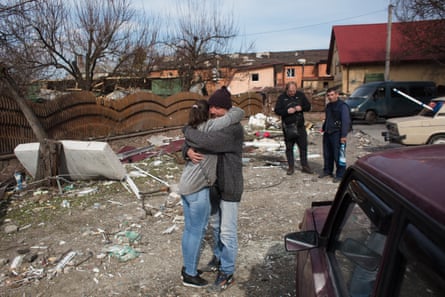
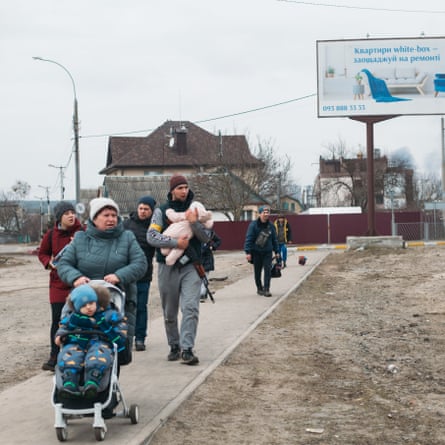
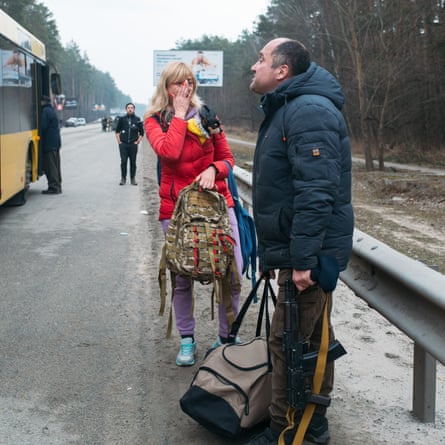
-
A member of the Territorial Defence battalion helps to rescue a child, and another member sees off his wife leaving on an evacuation bus, in Irpin, 6 March.
A year ago, Vaslova recalls waking up to the sounds of airstrikes in Kramatorsk. The city where her parents lived was suddenly occupied by the Russians. The following month, she says, “I have never ever been so scared for my life as on March 6 last year in Irpin when the town was shelled by the Russians simultaneously resulting in the death of a family.” That day, Vaslova says, she realised that “the biggest challenge for photojournalists in this war is to stay alive and healthy”. But it is precisely in difficult situations such as war that photojournalists have the ability to show the world hope and the strength of resistance.
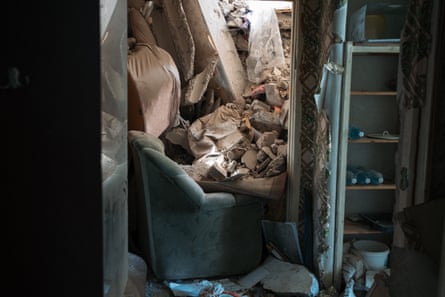
“I think the most significant photo was not from the trenches but from a maternity hospital,” says Vaslova. “Just because it’s important to show that there’s not only death around, but that babies continue to be born and that life goes on no matter what. Simple idea but we tend to forget about simple things or simple joys of life at times of terror.”
[ad_2]
READ SOURCE


